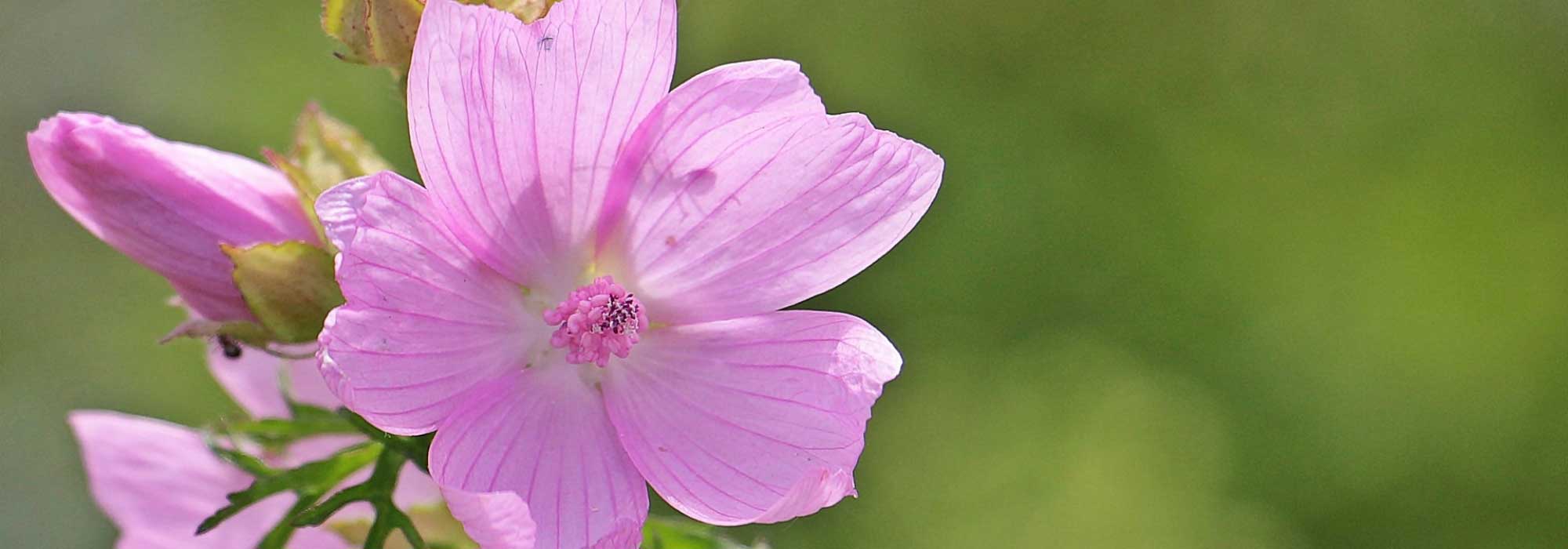
Mallow, Malva: sowing, planting, cultivation
Summary
Mallow in a nutshell
- Mallow is a charming summer perennial with a country look
- Offers elegant blue, pink, white or purple flowering throughout summer
- An edible and medicinal plant
- Hardy (at least down to -15°C), easy to sow and to grow, adapts to any well-drained soil
- A reliable choice for bringing colour to beds, borders, flowerbeds and pots
A word from our expert
La Mallow or Malva is a lovely summer perennial plant with natural charm. It is also an edible and medicinal plant whose flowers in pastel shades of blue, pink, white or purple and leaves offer numerous benefits; soothing and softening properties are valued in herbal medicine, herbal teas or infusions.
In the garden, Mallow is a safe bet to flower abundantly in summer beds or mixed borders. It suits natural gardens well, where it self-seeds easily.
From musk mallow with its spicy scent to Malva sylvestris, its wild cousin, it is a hardy perennial that adapts to almost any soil and that flowers from the first year of cultivation.
Discover our Mallows whose very long flowering delights novice or absentee gardeners!
Description and botany
Botanical data sheet
- Latin name Malva
- Family Malvaceae
- Common names Mallow
- Flowering June to October
- Height 0.20 to 1.20 m
- Sun exposure Sun, partial shade
- Soil type All, well-drained
- Hardiness -10°C to -25°C depending on variety
La Mallow or Malva is an herbaceous plant belonging to family Malvaceae such as lavateras, hollyhocks or marshmallow. It grows naturally by waysides, in fallow ground and dry places across Europe, Asia and North Africa.
Genus comprises around thirty species of annuals, biennials and semi-woody perennials, the best known being the wild species Malva sylvestris, also called great mallow, famed for its medicinal properties. This woodland mallow with purplish-pink flowers has produced hybrids such as Malva sylvestris var. Mauritania with very large flowers and varieties with white or blue-violet flowers like Malva sylvestris ‘Primley Blue’.
Alongside these classics, one also finds Musk mallow (Malva moschata) and its hybrids, Malva alcea with heart-shaped foliage, and Malva nicaeensis, a small annual mallow.
From a woody base develops a bushy clump of erect or spreading stems. Habit varies with forms.
Height of this vigorous shrub ranges from 20 cm to 1.20 m, occupying 40 to 60 cm at ground level. Rapid growth is matched only by the short lifespan of this perennial, which rarely lives more than three or four seasons, yet naturalises easily.
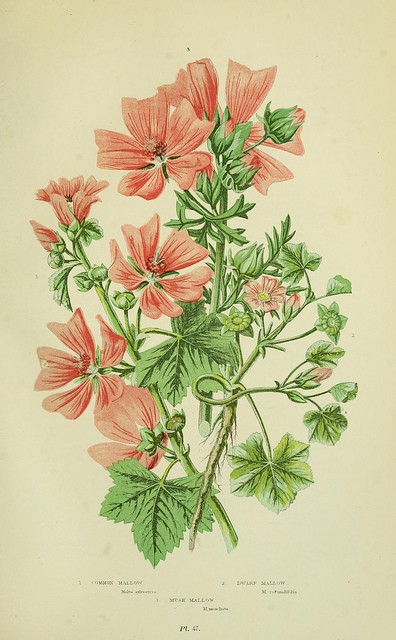
Malva sylvestris – botanical illustration
Well-branched stems bear deciduous, alternate leaves, rounded to cordate or heart-shaped in Malva alcea, entire or divided into 3 to 9 shallow lobes. These petiolate leaves, 5 to 15 cm long, are often crenate and dentate and resemble ivy leaves.
Foliage of Musk mallow, aromatic when crushed, gives off a faint musk scent. Often downy, leaves range from light to dark green.
Everything of the mallow is edible and the tender leaves can be prepared like spinach or enjoyed in wild salad mixes.
From this beautifully cut foliage emerge solitary flowers, grouped in bouquets in leaf axils or gathered in terminal leafy clusters. From June to October, on these abundant sturdy stems, numerous flowers 2 to 7 cm in diameter open, reminiscent of delicate hibiscus and lavatera flowers. Flowering has a very natural appearance.
Formed of 5 very notched petals, sometimes incised, with prominent styles, they open in a shallow flared funnel or in a flat cup enclosed in a collar of one to three bracts.
Each corolla reveals a subtle pattern. Most often pearly pink, purplish-pink to mauve, blue-violet to violet and subtly darker-striated, flowers are sometimes white. They turn blue-violet as they fade.
Flower buds and mallow flowers are also edible and feature in summer salads to add a slight peppery flavour.
This melliferous flowering attracts pollinating insects throughout summer.
Then it gives way to small edible, round fruits called “fromageons” because when opened they resemble small camemberts with a hazelnut taste, hence the mallow’s nickname “Herbe à fromage”. They can be eaten raw or pickled before ripeness while still green, in vinegar like capers.
At full ripeness, the calyx disintegrates and the achenes fall, self-seeding wherever they land.
These very elegant flowering stalks are lovely in simple, fresh bouquets.
Hardy beyond -15°C, Mallow is grown throughout France, although some species such as Malva sylvestris often behave like a biennial in cool climates.

Some mallow flowers: Malva sylvestris, Malva moschata ‘Alba’, Malva sylvestris ‘Zebrina’, Malva sylvestris ‘Primley Blue’, Malva moschata ‘Rosea’
Easy to grow and undemanding, it thrives in sun or light shade and tolerates ordinary soils, even poor or stony, rather dry, and well-drained.
A classic of countryside and naturalistic gardens, Mallow is grown in beds, borders or in pots.
Malva sylvestris is a medicinal plant known since Antiquity, prized for its soothing and emollient properties against irritations and inflammations.
All species and all parts of the mallow, from root to leaves, including flowers, flower buds and fruits, are edible.
You may also read
10 very easy perennials to sowMain species and varieties
Mainly perennial mallows are cultivated as perennials such as Malva sylvestris and its cultivars with white or blue flowers and Musk mallow (Malva moschata) and its hybrids, which sometimes offer a more compact, tidy habit.
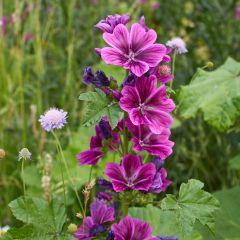
Malva sylvestris - Mallow
- Flowering time july to october
- Height at maturity 80 cm
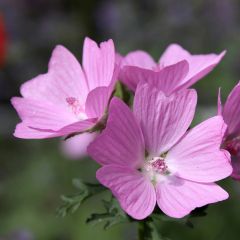
Malva moschata Rosea - Musk Mallow
- Flowering time july to october
- Height at maturity 60 cm
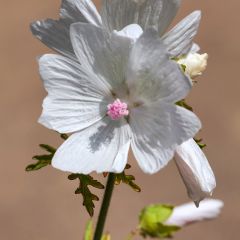
Malva moschata Alba - Musk Mallow
- Flowering time july to october
- Height at maturity 70 cm
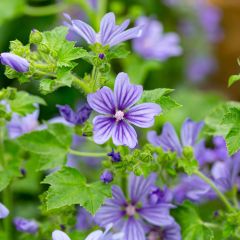
Malva sylvestris Primley Blue - Mallow
- Flowering time july to october
- Height at maturity 40 cm
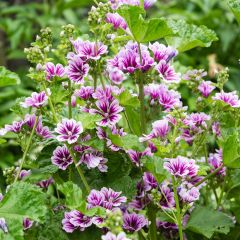
Malva sylvestris Zebrina Blue - Mallow
- Flowering time july to october
- Height at maturity 1,90 m
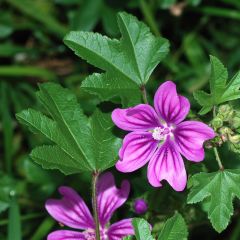
Malva sylvestris
- Flowering time july to november
- Height at maturity 60 cm
Discover other Purple Malva - Mallow
View All →Available in 1 sizes
Available in 1 sizes
Available in 1 sizes
Available in 2 sizes
Available in 1 sizes
Available in 1 sizes
Available in 1 sizes
Available in 1 sizes
Available in 1 sizes
Available in 1 sizes
Planting
Where to plant mallows?
Extremely tolerant of cold, all mallows are hardy and withstand -15 to -25°C. Some, like woodland mallow, less hardy (-10°C), are grown as short-lived perennials (usually 3 or 4 years) in southern France and as a biennial in harsher climate.
They tolerate drought well.
They are easy to grow and a little
These are all-purpose plants that adapt to ordinary, even poor, well-drained soil, neither too dry nor too wet. Their preference is nevertheless for soil rather rich but not excessive and slightly calcareous.
They like to be planted on a sunny site where they will flower more profusely. In southern regions they can tolerate light shade.
With their light, natural silhouette and very soft colours, mallows fit perfectly into country-style plantings or cottage gardens, bringing freshness in height of summer. With rapid growth and low demands, they are also perfect for flowering a brand-new garden or a holiday garden.
In natural settings they join perennial beds, flowerbeds, large embankments, path edges or even to line a path with flowers or for pots on a terrace.
When to plant mallow
Our mallows in bucket are planted from March to May or from September to November.
How to plant mallow?
In open ground
Allow 4 to 6 plants per m² of mallow, spaced 30–40 cm and staggered for a nice massed flowering effect. In heavy soils, add river sand and potting compost.
- Work soil well
- Dig hole 2 to 3 times size of bucket
- Make a bed of gravel at bottom of hole for good drainage
- Add compost to garden soil
- Firm soil and water weekly until established (about 2 months)
In pots
- Spread a good layer of drainage (gravel or clay balls) in a pot or planter
- Plant in mix of garden soil and potting compost
- Water regularly as soon as surface of soil is dry
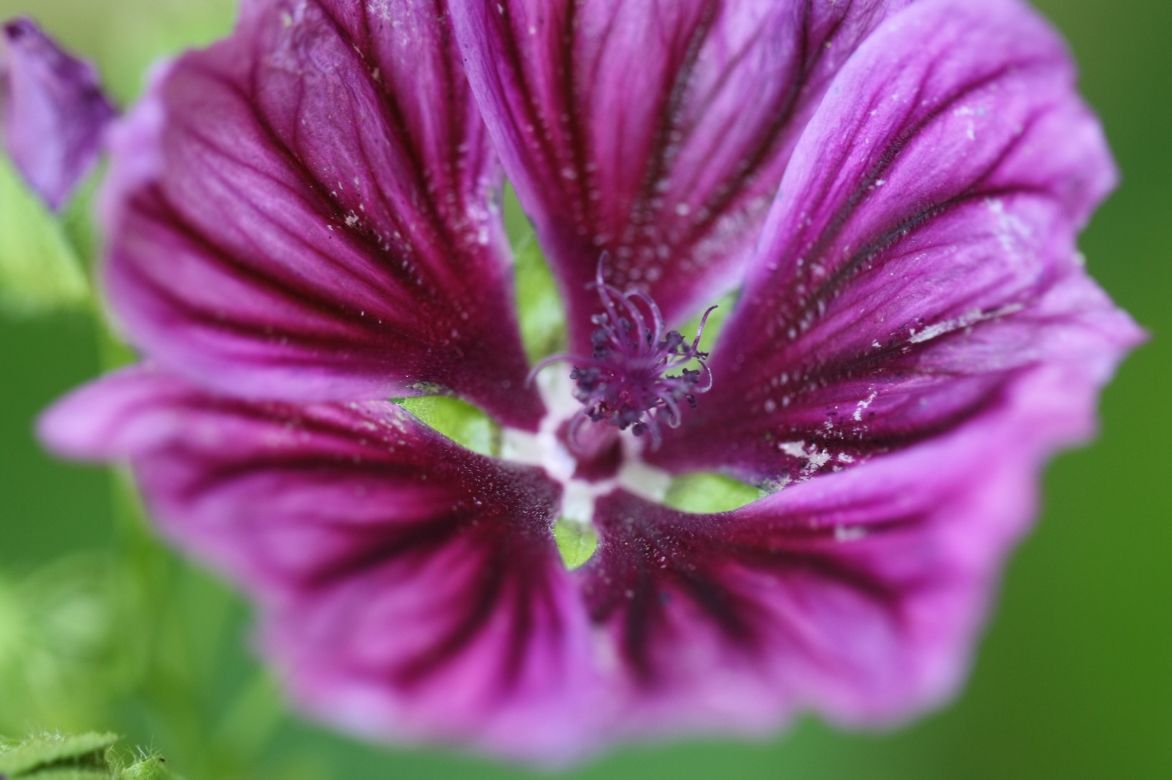
You may also read
Succeeding in sowing perennial plantsWhen and how to sow mallow seeds
If in autumn you collected small brown seeds arranged in concentric circles in the dried capsules of your mallow plants, sow them. Otherwise, choose from our mallow seeds and do your sowing from March to May.
In a seed tray
- Sow seeds broadcast in a seed tray filled with seed compost and a little sand
- Cover seeds with 1/2 cm of compost
- Firm down lightly
- Keep moist but not waterlogged at 21°C until germination, which takes 15–21 days
- Pot seedlings individually into 8 cm pots when they have 3 or 4 leaves
- When they are well established, plant out in open ground or into larger pots without disturbing rootballs
In open ground
You can also sow mallow seeds directly in situ in May, in warmed soil, to have flowers from the first summer.
- Crumb soil well to spade depth
- Sow broadcast or in drills, spacing seeds loosely
- Cover with a few centimetres of compost
- Firm down lightly with back of rake
- Water with a fine spray and keep soil moist until germination, which takes 2–4 weeks
- Thin out sowings when young plants have 3 or 4 leaves
- Keep only one young plant every 15 or 20 cm
Maintenance, pruning and care
Mallow requires little maintenance. It is ideal in low‑maintenance gardens as it needs no watering and tolerates drought well once established: water if dry weather persists, but do not flood and avoid wetting foliage.
When they reach 30 cm in height, with a finger, pinch the stems (cut the tips) to encourage them to ramify.
Stake taller species if necessary, especially in rich soil where they tend to flop in the wind.
After flowering, allow to set seed to benefit from spontaneous sowings.
Pruning is not necessary. In March, using pruning shear, simply cut back dead foliage to ground level.
When and how to harvest mallow?
Although Malva sylvestris is well known for its medicinal virtues, you should know that all mallow species are edible. Harvest the flowers of Mallow before they are fully open. You can cook them fresh in flower salads or use them dried in infusions or decoctions as a medicinal plant.
How to dry mallow?
Hang the stems upside down to dry in a dry, airy place. Dried mallow flowers can be kept for a long time in jars away from light.
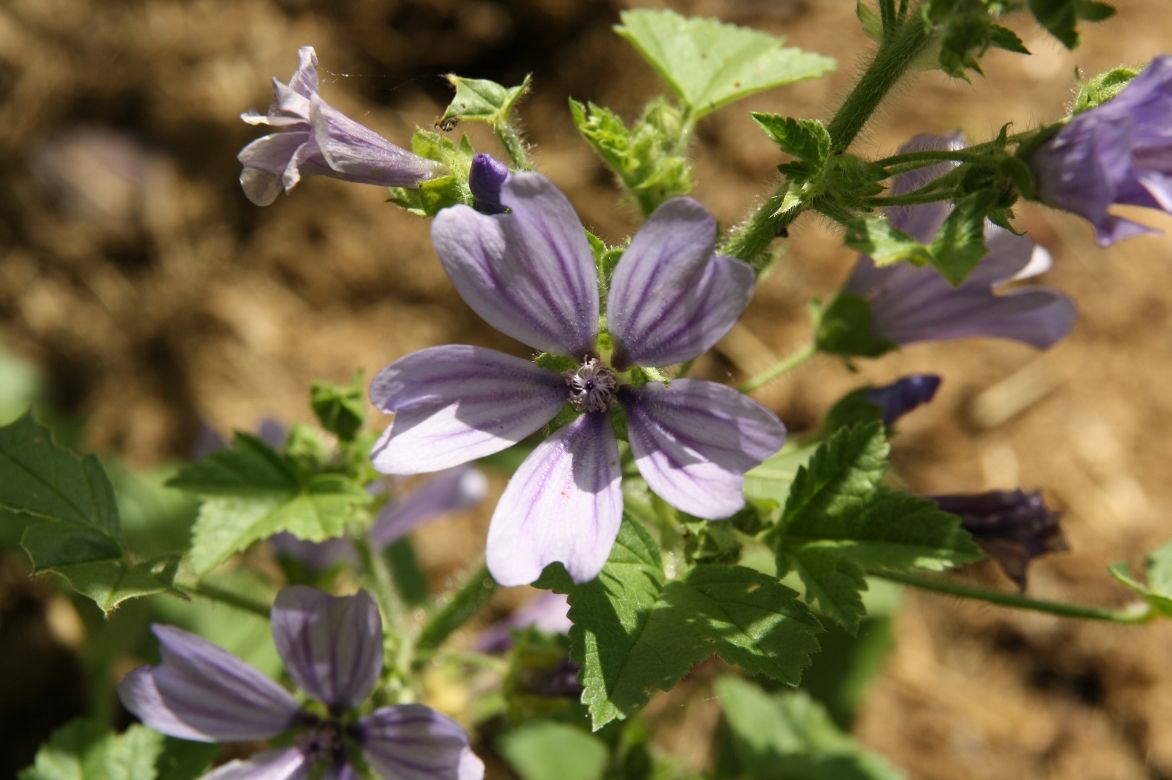
Possible diseases and pests
Like all Malvaceae, this cousin of hollyhock can be prone to foliar spots and rust, a fungus that appears as orange pustules on leaves. Not serious, it is more unsightly than truly dangerous for Mallow. Humid conditions favour their development: avoid watering foliage and, as a preventive measure, apply horsetail decoctions.
→ Read more on this topic: “getting rid of rust disease”
Propagation
Mallow self-seeds readily if the soil suits it, allow spontaneous sowings to develop or follow our tips above to sow mallow seeds properly.
Division
In October, divide adult clumps 2 or 3 years old.
- Lift the clump with a digging fork
- Separate the rootball into several divisions, each with roots
- Replant each new young plant immediately in a pot or in the garden in well-prepared soil
Pairing mallow in the garden
Very easy to combine, with its silhouette both simple and elegant, Mallow asserts itself in all natural gardens, parsonage gardens and cottage gardens. Versatile, it settles in a naturalistic meadow or simply in a simple summer border.
Useful in pink gardens or mauve-inspired schemes, surrounded by its cousins lavateras, hibiscus or hollyhocks!
Use freely to flower a naturalistic meadow with cosmos, annual poppies, yarrow, nepeta, centaureas and Echinops.

An example of a combination : Achillea millefolium ‘Red Velvet’, Nepeta ‘Six Hills Giant’, Malva sylvestris ‘Primley Blue’, Papaver somniferum, Cosmos atrosanguineus ‘Chocamocha’
Excels in borders alongside carnations and bellflowers.
On the edge of a border, it will add a delicate touch alongside roses, Knautia macedonica, foxgloves or gypsophila.
In a pink garden, mix a few clumps of mallow with sedums, gaura, paniculate phlox, agastache, valerian, hybrid mulleins, hardy geraniums.
Pastel-coloured flowers will struggle to compete with very bright colours but will be marvellous with the purple foliage of heucheras or the glaucous foliage of perennial artemisias and corn poppies to create very soft scenes in the heart of summer.
In a bed of summer perennials, it will slip perfectly between penstemons, light grasses, perennial flax, nigellas, acanthus.
Play on the pink/green contrasting combinations by pairing it with euphorbias and alchemilla in acid-yellow tones.

An idea for a contrasting combination : Malva sylvestris, Euphorbia characias ssp wulfenii, Euphorbia cyparissias ‘Orange Man’ (or ‘Fens Ruby’ would also be perfect)
Mallow excels in borders with carnations, ornamental alliums and catmints.
In an area reserved for edible and aromatic plants, pair mallow with monarda.
Useful resources
- Draw on the large Malvaceae family to create a pale purple inspiration in the garden!
- Mallow is easy to pair with many other summer-flowering perennials
- Discover our parson’s-garden perennials
- Subscribe!
- Contents
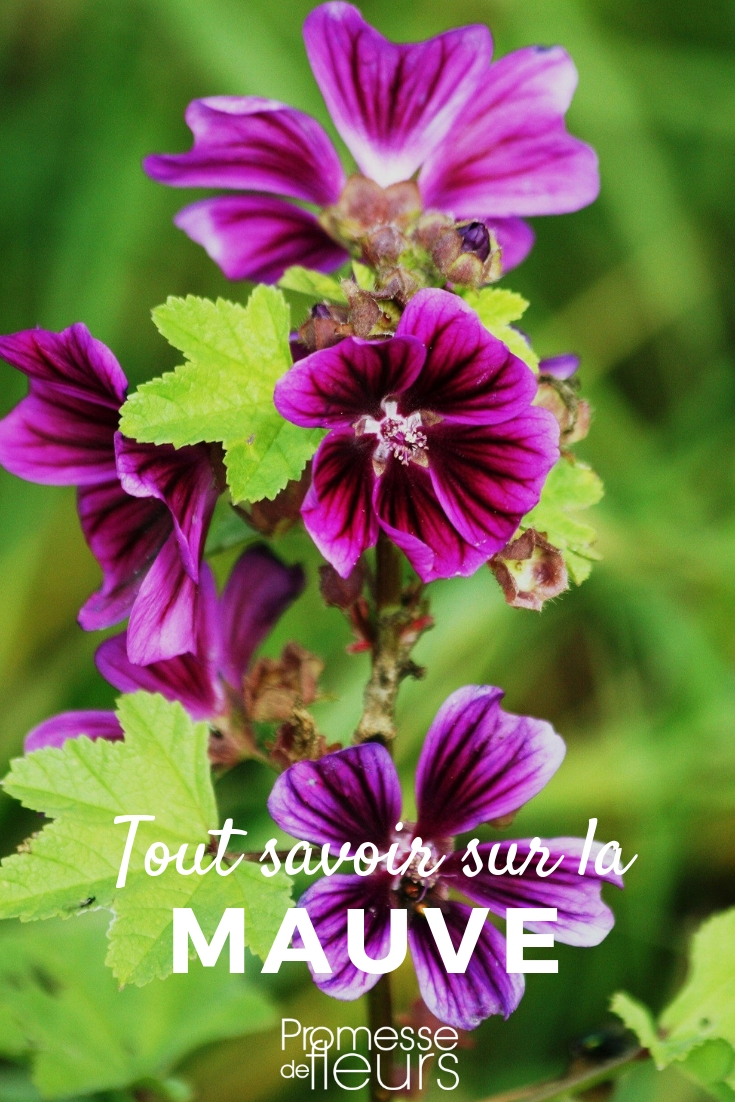































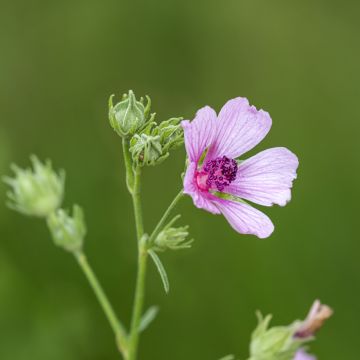



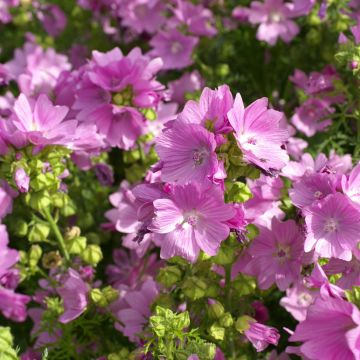
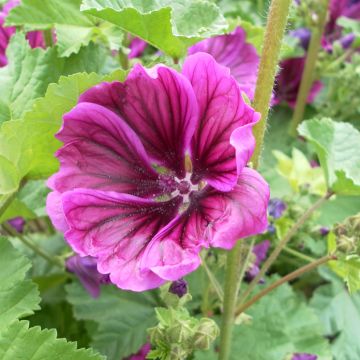
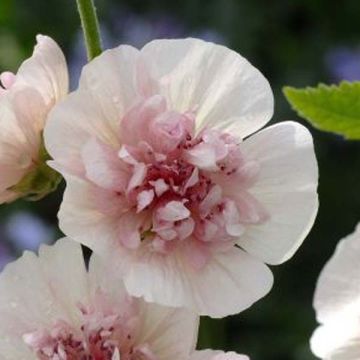

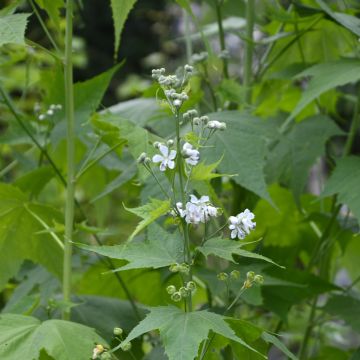

Feedbacks